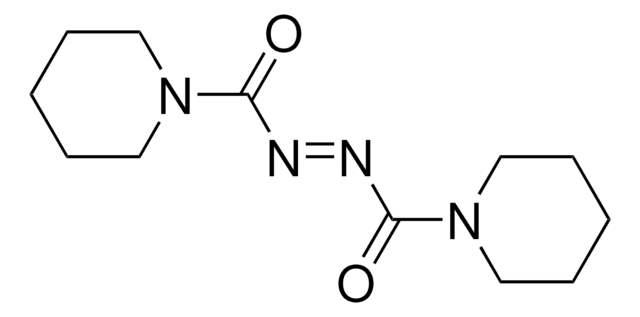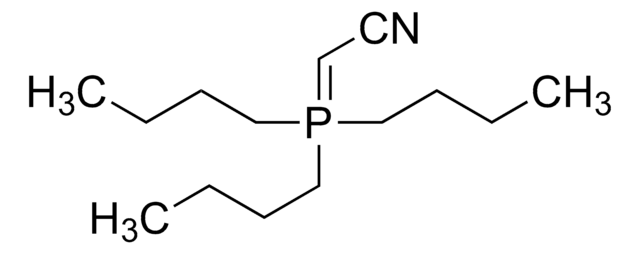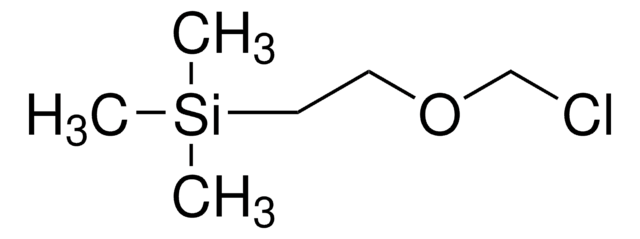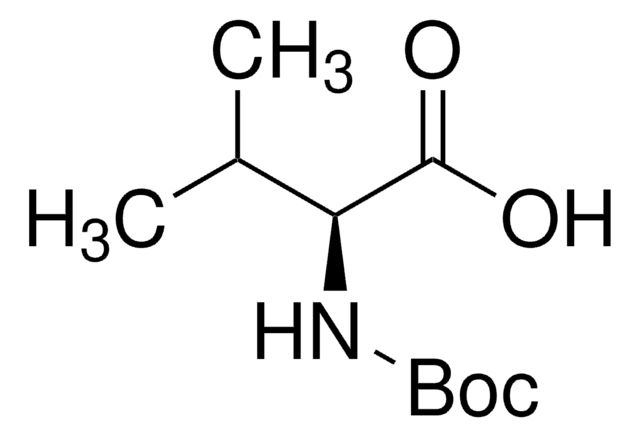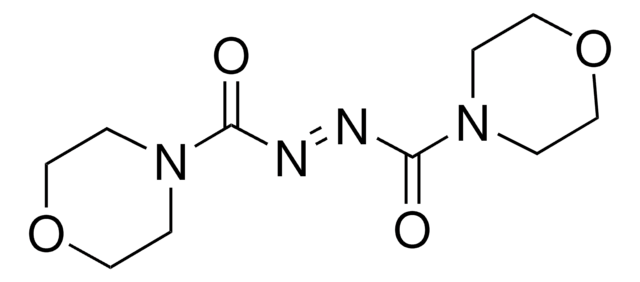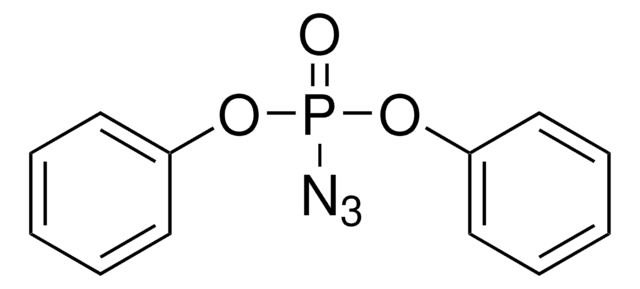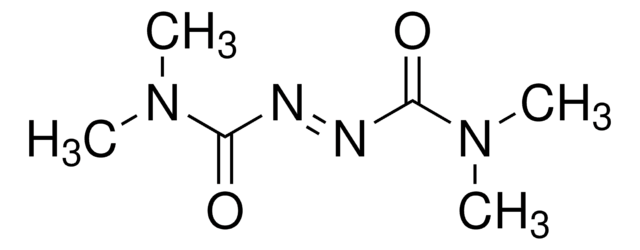680850
Di-(4-chlorobenzyl)azodicarboxylate
97%
Synonyme(s) :
Bis-(4-chlorobenzyl)azodicarboxylate, DCAD
About This Item
Produits recommandés
Essai
97%
Forme
solid
Pf
108-112 °C
Groupe fonctionnel
azo
chloro
Chaîne SMILES
O=C(/N=N\C(OCC1=CC=C(Cl)C=C1)=O)OCC2=CC=C(Cl)C=C2
InChI
1S/C16H12Cl2N2O4/c17-13-5-1-11(2-6-13)9-23-15(21)19-20-16(22)24-10-12-3-7-14(18)8-4-12/h1-8H,9-10H2/b20-19-
Clé InChI
UIFGGABIJBWRMG-VXPUYCOJSA-N
Description générale
Application
- Amino thioesters via guanidine-catalyzed biomimetic enantioselective decarboxylative Mannich and amination reactions of malonic acid half thioesters
- Hydroacylation reaction of aldehydes in Ionic liquid (IL) medium
- DCAD (di-p-chlorobenzyl azodicarboxylate) for Mitsunobu coupling reactions
Faites votre choix parmi les versions les plus récentes :
Déjà en possession de ce produit ?
Retrouvez la documentation relative aux produits que vous avez récemment achetés dans la Bibliothèque de documents.
Les clients ont également consulté
Contenu apparenté
Prof. Bruce Lipshutz and co-workers have developed designer surfactants to allow several classes of transformations (e.g. Suzuki-Miyaura, Olefin Metathesis, 1,4-Addition to Enones, etc.) to be performed in water.
Notre équipe de scientifiques dispose d'une expérience dans tous les secteurs de la recherche, notamment en sciences de la vie, science des matériaux, synthèse chimique, chromatographie, analyse et dans de nombreux autres domaines..
Contacter notre Service technique

